Milton Keynes: The middle-aged new town
- Published
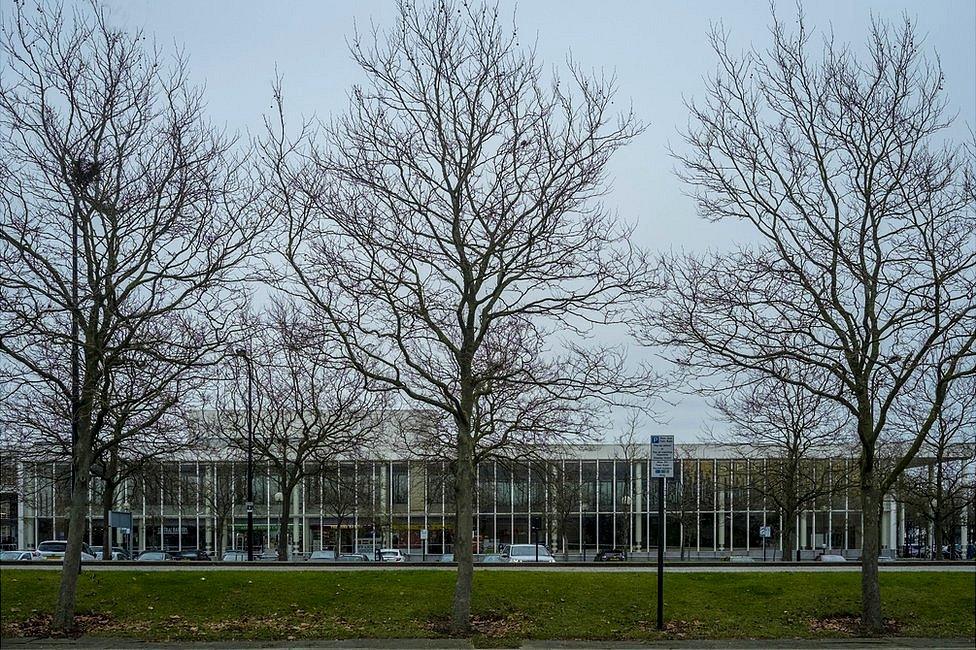
The rhythm of the tree planting and its relationship to the columns of the buildings they stand near are "not accidental", says Mr Shostak
Most towns grow and evolve over hundreds if not thousands of years. Not so Milton Keynes, which is 50 years old. Perhaps the best known of the 20th Century "new towns", it has its detractors but is also much loved by its residents.
The town was born with an Act of Parliament in 1967 which approved the building of a new community of 250,000 people covering 8,850 hectares (21,869 acres) of Buckinghamshire farmland and villages.
Built to ease the housing shortages in overcrowded London, its founding principles were for an "attractive" town that enshrined "opportunity and freedom of choice".

App users should tap here to fully explore the interactive images, showing archive and current photographs



The media has not always been kind to Milton Keynes: it has mocked its concrete cows (now housed in a museum), accused it of blandness and told of the "new city blues" suffered by early residents.
Those who have grown up there tell of a very different Milton Keynes.
Simon Clawson arrived in MK aged four. He now lives there with his two children and wife Hannah.


"It was fantastic," he says of his childhood. "I remember summer days were always outside.
"Somebody once told me that with all the lakes we have here, we have more waterline than Brighton."
His youth in the town was marked by a series of exciting arrivals - the first cinema called The Point, the football stadium and the Snowdome building.
"We had to wait for a lot of things here but when they came they tend to be more modern and spectacular than anywhere else.
"We are adaptable here because everything is always changing."


Former Team GB Olympic badminton player Gail Emms has also made Milton Keynes her home, having first moved there to train.
"Milton Keynes is one of the best places for families - I am spoilt for choice here," she says.
"So many of my friends take the Mickey about where I live.
"But then I tell them we have a great school a short walk away and about the facilities we have.
"It is so family-centred now. My kids are going to grow up in Milton Keynes, so it is now about what they need and want."


Not everybody feels that way.
Theo Chalmers, of the campaign group Urban Eden, claims recent development in the town has "betrayed" its founding principles.
"The principles of the original master plan were brilliant," he says.
"But those who have been in charge have bit by bit, like a death by a thousand cuts, destroyed the very things that made Milton Keynes extremely special and a user-friendly community."
He cites the narrowing of boulevards around The Hub leisure quarter and the filling in of underpasses as examples.
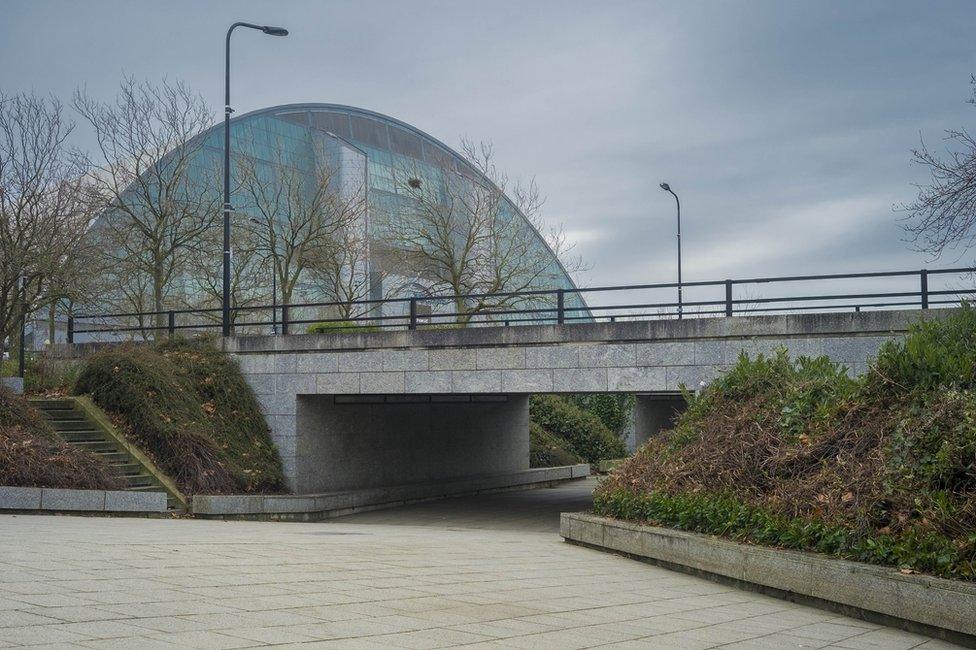
The Snowdome building created a great deal of excitement in Milton Keynes when it was built
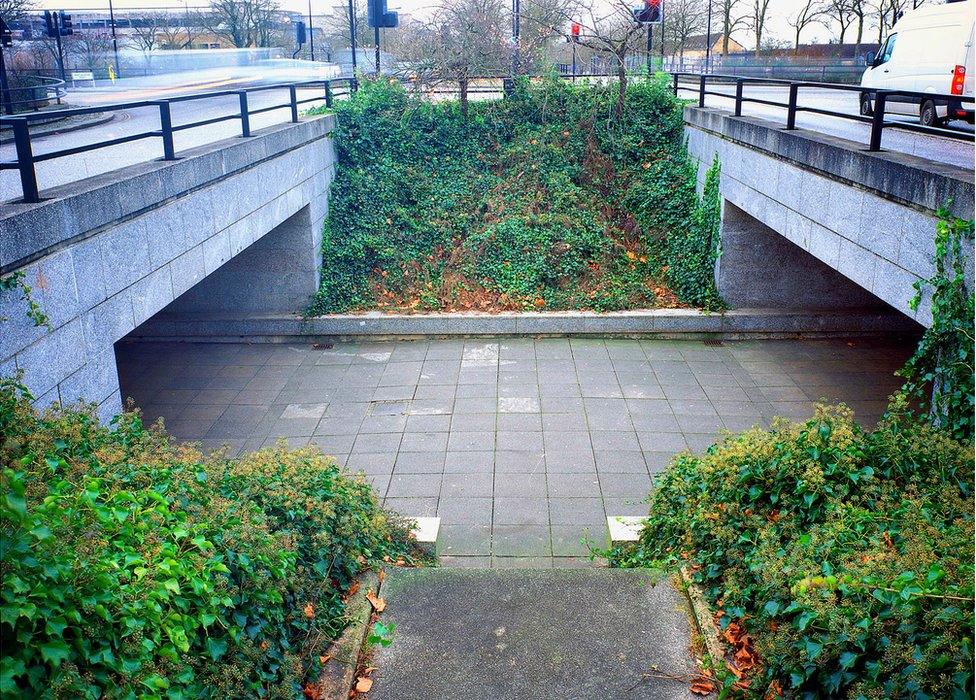
Some claim the closing of some of the town's network of underpasses goes against its founding principles
So how will Milton Keynes look in 100 years' time?
It will be bigger, with greater architectural diversity and more homes, says Lee Shostak, one of the town's early planners.
He arrived in 1971 as a PhD student from the Massachusetts Institute of Technology (MIT) intent on studying the new development.
"Very little had actually been built," he says, "and trying to understand what was going on from outside the (Milton Keynes) Development Corporation was going to be impossible."
So, in 1972, the American research student joined the development corporation as a planner.
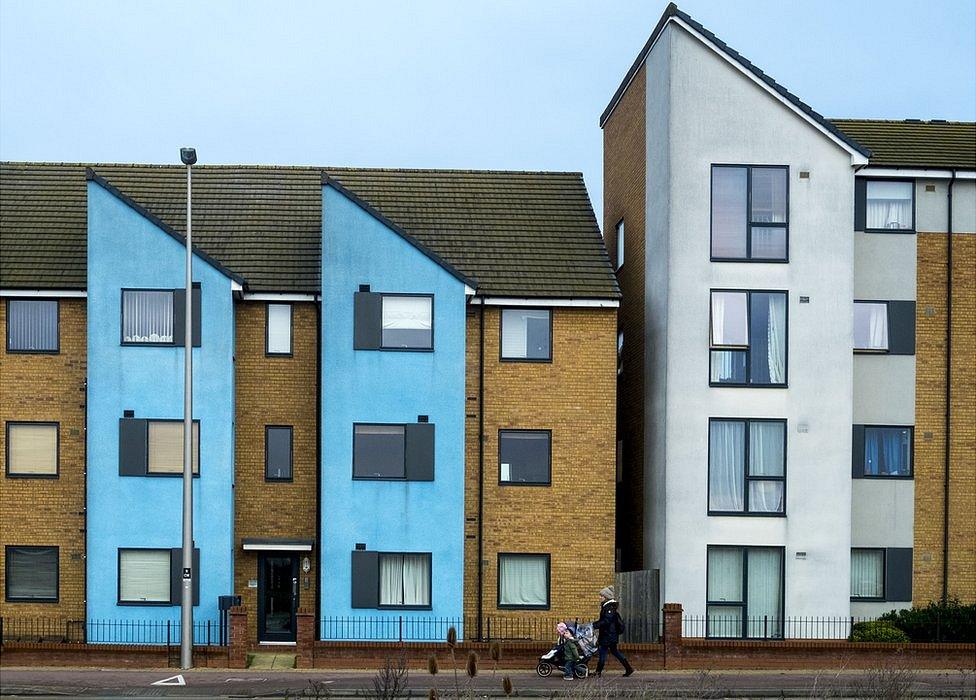
"People came to Milton Keynes to be part of something new where everyone could shape their place called home," says the council leader Peter Marland
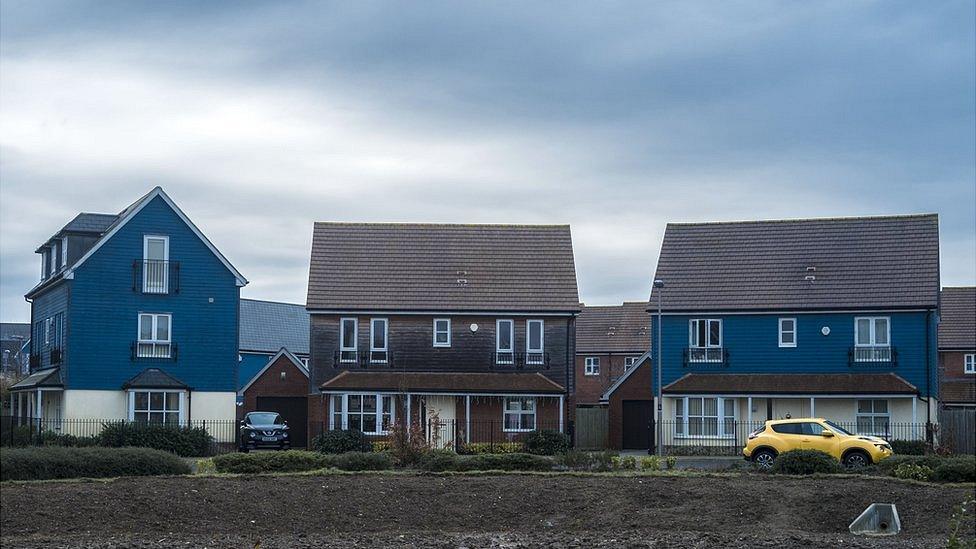
The colourful weather boarded homes of Far Holme in Milton Keynes Village are one of the town's newer developments
Mr Shostak, who made Milton Keynes his home from 1972 until 1995, said the town had been an "outstanding success".
As the years pass the "city's parks and trees will be even bigger and more luxurious".
"The achievements of making the landscape in Milton Keynes rivals that of Capability Brown," he added.
"In garden city terms Milton Keynes is a grown up. But by real city standards, Milton Keynes is at best an adolescent."

"By real city standards, it is at best an adolescent," says former planner Lee Shostak
Archive pictures from Getty Images.
Related topics
- Published1 January 2017
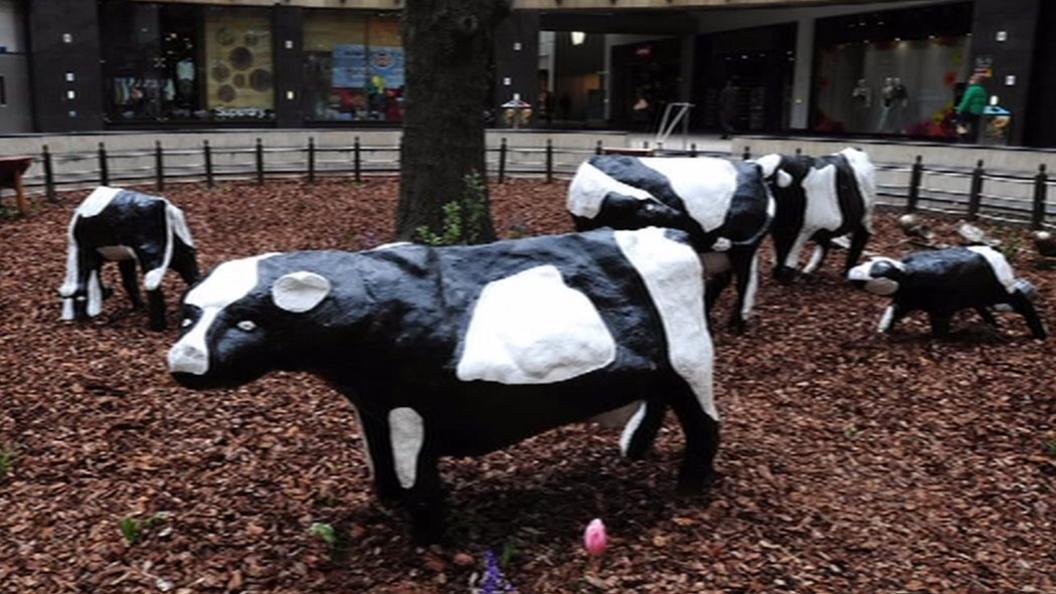
- Published20 May 2013
